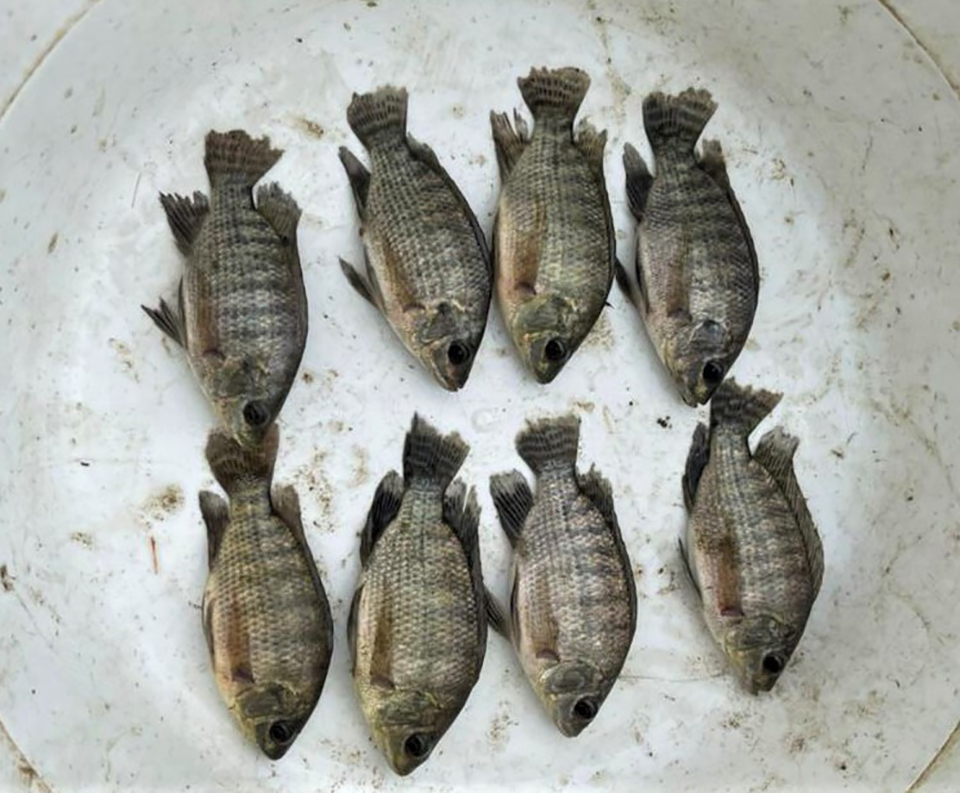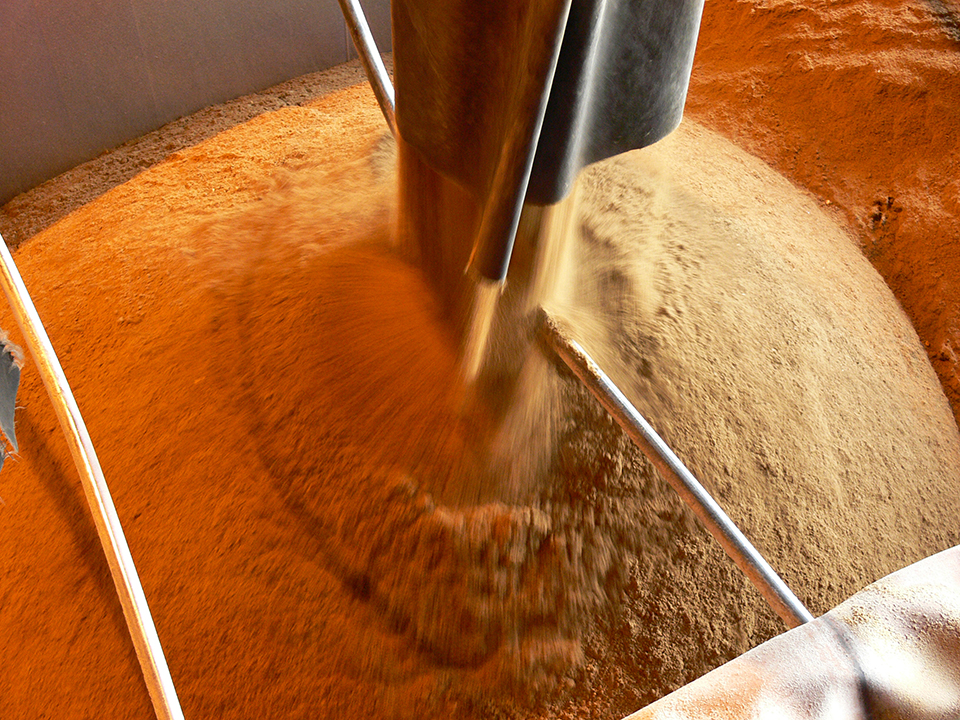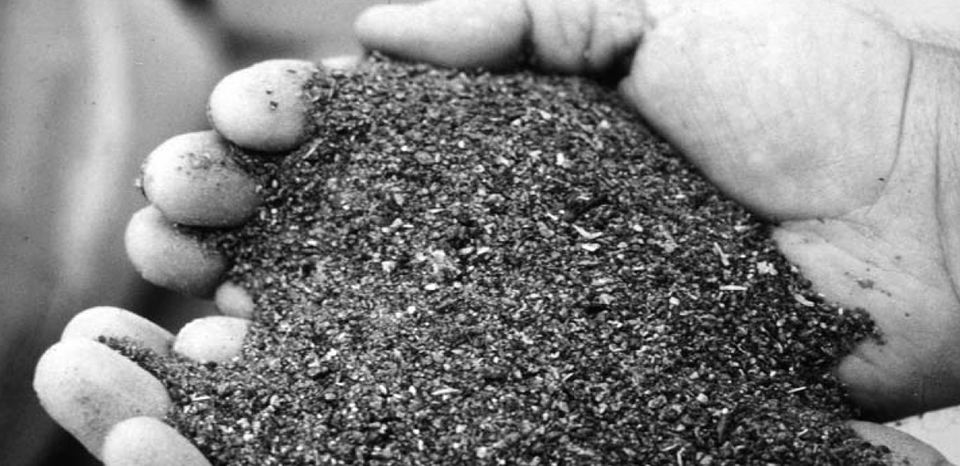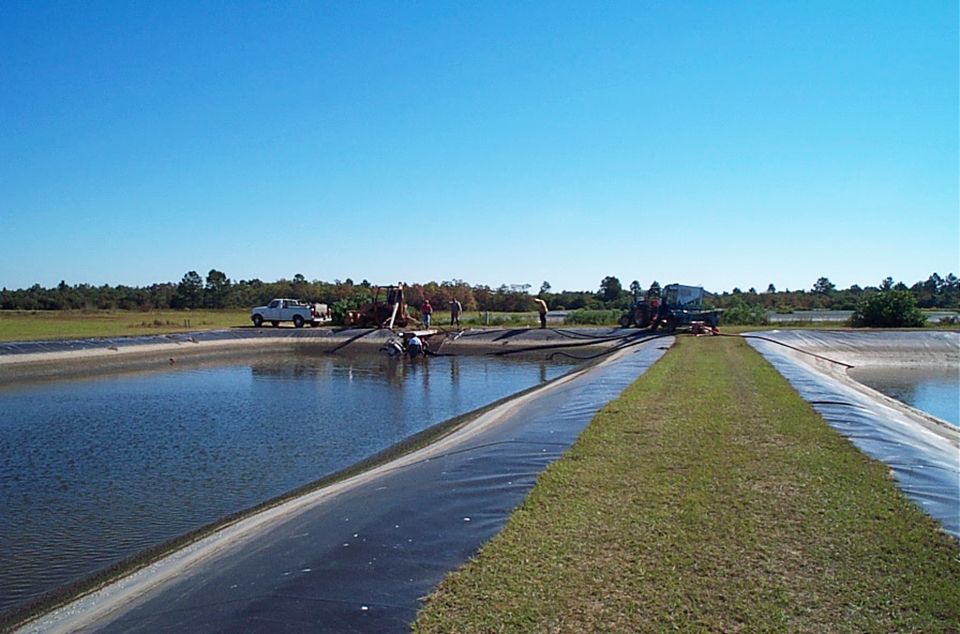At medium levels of inclusion in diets, FPBM improved weight gain, growth rate and feed conversion ratio

The use of protein sources of animal origin as fishmeal replacement in fish feed is a growing trend in the aquaculture industry. Among commercially available animal protein alternatives, poultry byproduct meal (PBM) has been one of the best nutritional value and amino acid balances (lipids, 12 to 15 percent and proteins, 58 to 65 percent), except for its low levels of lysine and methionine. It is widely available at competitive prices and is therefore one of the main dietary protein alternatives to fishmeal in the feed of cultured species.
Potential issues with PBM feeding are due to the existence of fibers and high levels of lipids, which can cause high oxidation, malnutrition, and lower palatability. To reduce the costs of the feed and environmental pollution, PBM can be treated with suitable microorganisms with beneficial effects, and recently, fermentation has been applied to balance the nutritional value of animal protein sources. The microorganisms can be active under anaerobic conditions in order to dissimilate the ingredients organic contents, and long chain amino acids and fatty acids can be shortened to be more available for absorption in the gastrointestinal tract of fish.
To date, no data are available about using fermented poultry byproduct meal (FPBM) on the growth performance and health condition of Nile tilapia (Oreochromis niloticus).
This article – adapted and summarized from the original publication [Dawood M.A.O. et al. 2020. Evaluation of Yeast Fermented Poultry By-Product Meal in Nile Tilapia (Oreochromis niloticus) Feed: Effects on Growth Performance, Digestive Enzymes Activity, Innate Immunity, and Antioxidant Capacity. Front. Vet. Sci. 6:516] – evaluated the effects of dietary inclusion levels of fermented poultry byproduct meal (FPBM) on growth performance, digestive enzymes activity, and immunity of Nile tilapia.
Study setup
Nile tilapia fingerlings were obtained from a local farm in Kafrelsheikh, Egypt, and transported to the Animal Production Department, Faculty of Agriculture, Kafrelsheikh University. Fish were acclimated for two weeks then distributed (avg weight 10.6 ± 0.3 grams) into 15 glass aquaria (60 liters) at stocking density of 20 fish per tank and with continuous aeration. Water quality parameters were carefully monitored and maintained at 24.2 ± 1.6 degrees-C, 6.32 ± 0.3 mg per liter, 7.05 ± 0.6, and 0.32 ± 0.01 mg per liter, respectively, for temperature, dissolved oxygen, pH and total ammonia.
Five isonitrogenous (30.8 percent crude protein) and isolipidic (6.5 percent crude lipid) diets were formulated – refer to original publication for detailed information, including the fermentation process. These experimental diets were formulated to contain 0, 10, 20, 30 and 40 percent FPBM (Con, FPBM10, FPBM20, FPBM30 and FPBM40 diets) and were further balanced for crude protein, using fishmeal, soybean meal and other plant protein mixes.
The aminoacids methionine, lysine, threonine, and tryptophan were added to obtain an equivalent indispensable amino acid profile. All ingredients were completely mixed and pelleted (1 to 2 mm die), then pellets were air dried and stored at minus-20 degrees-C until used. Fish were fed at was 3 percent of body weight provided twice daily.
For detailed information on the experimental design and fish husbandry; diets and feed preparation; sample collections and chemical analyses; digestive enzyme activity and immunological assays; and statistical analyses, refer to the original publication.
https://www.aquaculturealliance.org/advocate/enhanced-biodiversity-of-gut-flora-feed-efficiency-in-nile-tilapia-under-reduced-frequency-feeding/
Results and discussion
Our results showed that fish fed the FPBM10 and FPBM20 diets showed significantly higher weight gain and specific growth rate, and lower feed conversion ratio than those fed the Con and FPBM40 diets. Moreover, inclusion of FPBM at 40 percent (FPBM40) led to significant reduction of feed intake compared to the other treatments.
Data also indicated that FPBM could be successfully included at up to 40 percent in the tilapia experimental diets and did not impair fish feed efficiency, conversion or growth performance. At an inclusion level of 20 percent, fish had better growth performance compared to fish that received the control diet. Previous studies by other researchers had reported that growth performance was affected in fish fed feed with 75 percent of fishmeal replacement, irrespective of the inclusion levels of PBM.
The survival rate of fish fed diets with FPBM remained high during our trial, supporting results of numerous previous studies that tested FPBM protein in the diets of Indian major carps. In our study, fish growth parameters increased at 19.1 to 25.14 percent levels of FPBM, but tilapia fed the diet with high, 40 percent level of FPBM (FPBM40) did show reduced growth performance and feed utilization, possibly related to lower digestive enzyme activity and feed palatability.
The fermentation process can increase the apparent digestibility of nutrients, and the observed, improved feed efficiency in our FPBM20 (20 percent) diet could be attributed to the higher level of peptides as a result of the fermentation process by enzymatic degradation, where small-size peptides resulted from protein fractions degradation. These small-size peptides can be absorbed more efficiently by cells in the fish intestine.
The lowest FCR was observed for fish fed the diet with FPBM20, not significantly differ from those obtained for the groups fed FPBM10 and FPBM30 levels but suggesting the beneficial role of using the yeast Saccharomyces cerevisiae to ferment the PBM.
The activity of digestive enzymes can improve and increase the feed utilization in the fish intestine. Inclusion of FPBM in our experimental diets increased the activities of three of these enzymes: amylase, lipase and protease. Numerically, the highest amylase and lipase values were in the FPBM10 and FPBM20 groups, while the protease activity was increased at up to the FPBM40 level of inclusion.
The decreased amylase and lipase activities we observed in fish fed FPBM40 compared to those fed the lowest levels was due to the high levels of fibers and non-digestible nutrients in the latter diet. The effect of experimental diets with FPBM inclusion on the activity of digestive enzymes is scarce and further investigations are needed. Fermentation of PBM resulted in improvements in the measured responses of various immune responses we monitored.
Perspectives
Based on our results, various dietary levels of fermented poultry byproduct meal improved the general performances of Nile tilapia juveniles, with recommended inclusion levels of FPBM at between 11.17 and 25.14 percent of the diet. FPBM was shown to have enhanced the nutritional quality of the feeds tested in terms of higher protein and essential amino acids, compared to diets without FPBM.
Now that you've reached the end of the article ...
… please consider supporting GSA’s mission to advance responsible seafood practices through education, advocacy and third-party assurances. The Advocate aims to document the evolution of responsible seafood practices and share the expansive knowledge of our vast network of contributors.
By becoming a Global Seafood Alliance member, you’re ensuring that all of the pre-competitive work we do through member benefits, resources and events can continue. Individual membership costs just $50 a year.
Not a GSA member? Join us.
Author
-
Mahmoud A.O. Dawood, Ph.D.
Corresponding author
Assistant Professor
Kafrelsheikh University, Kafr el-Sheikh, Egypt
Editor's note: This article has 10 co-authors, but only the contact information of the corresponding author, Dr. Mahmoud A.O. Dawood, is included.
Related Posts

Aquafeeds
Animal protein meals reduce feed costs but don’t improve shrimp performance
The authors conducted a study to determine how replacement of salmon meal with various animal protein meals in feed affected the growth performance of white shrimp.

Aquafeeds
Animal byproducts can provide cholesterol for shrimp feed
Animal byproducts like blood meal, meat and bone meal and other rendered products are good sources of cholesterol for use in aquaculture feed.

Aquafeeds
Alternative ingredients for tilapia aquafeeds
The increasing production of tilapia is increasing the demand for fishmeal as a protein source for formulated aquafeeds.

Health & Welfare
Plant, poultry byproduct proteins tested in shrimp diets
A study examined the replacement of poultry byproduct meal with plant proteins and low levels of squid meal in shrimp feeds. Production results for shrimp raised in ponds showed no significant difference in final weight, yield, FCR and survival among the four treatments with varied levels of poultry meal.



